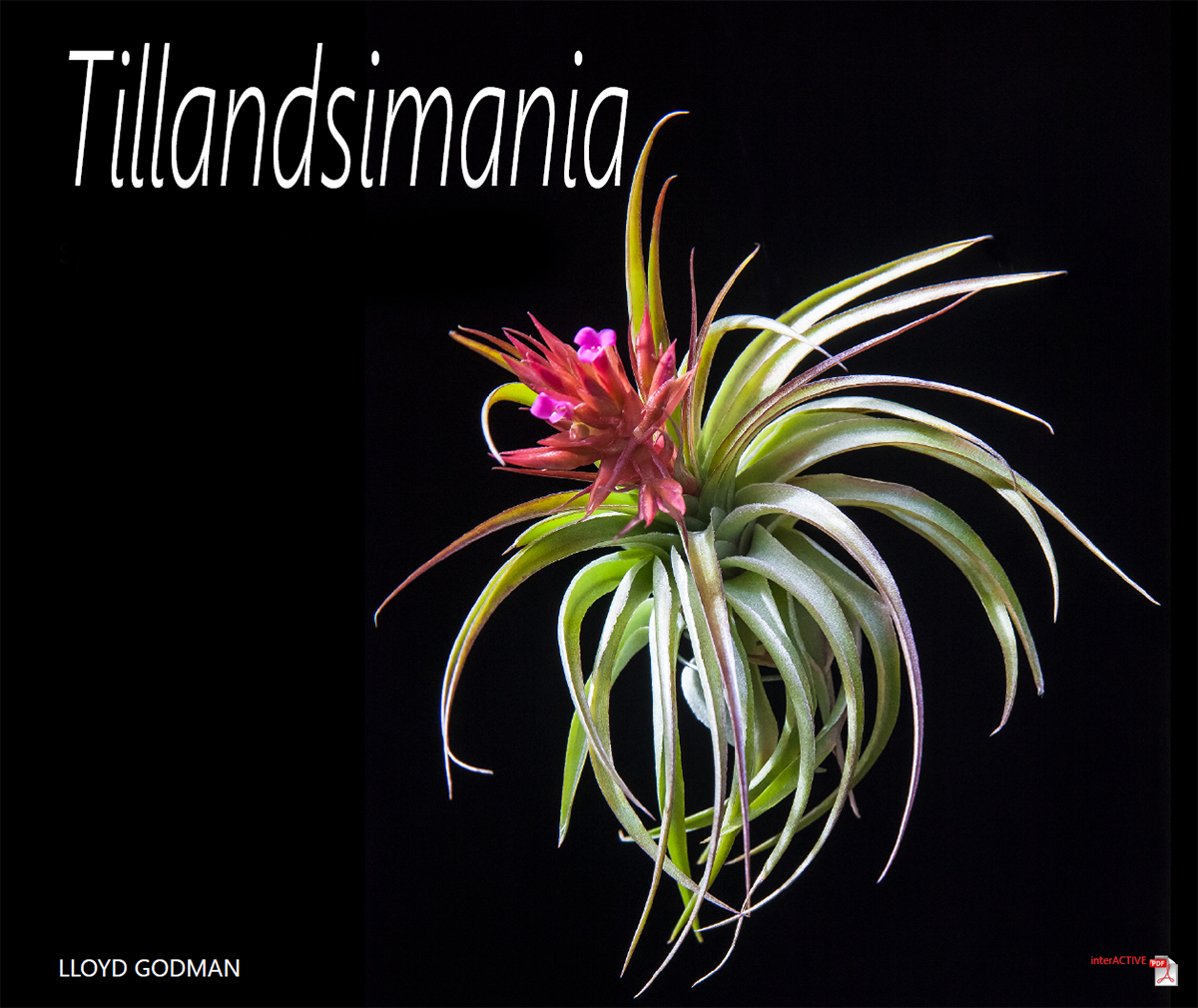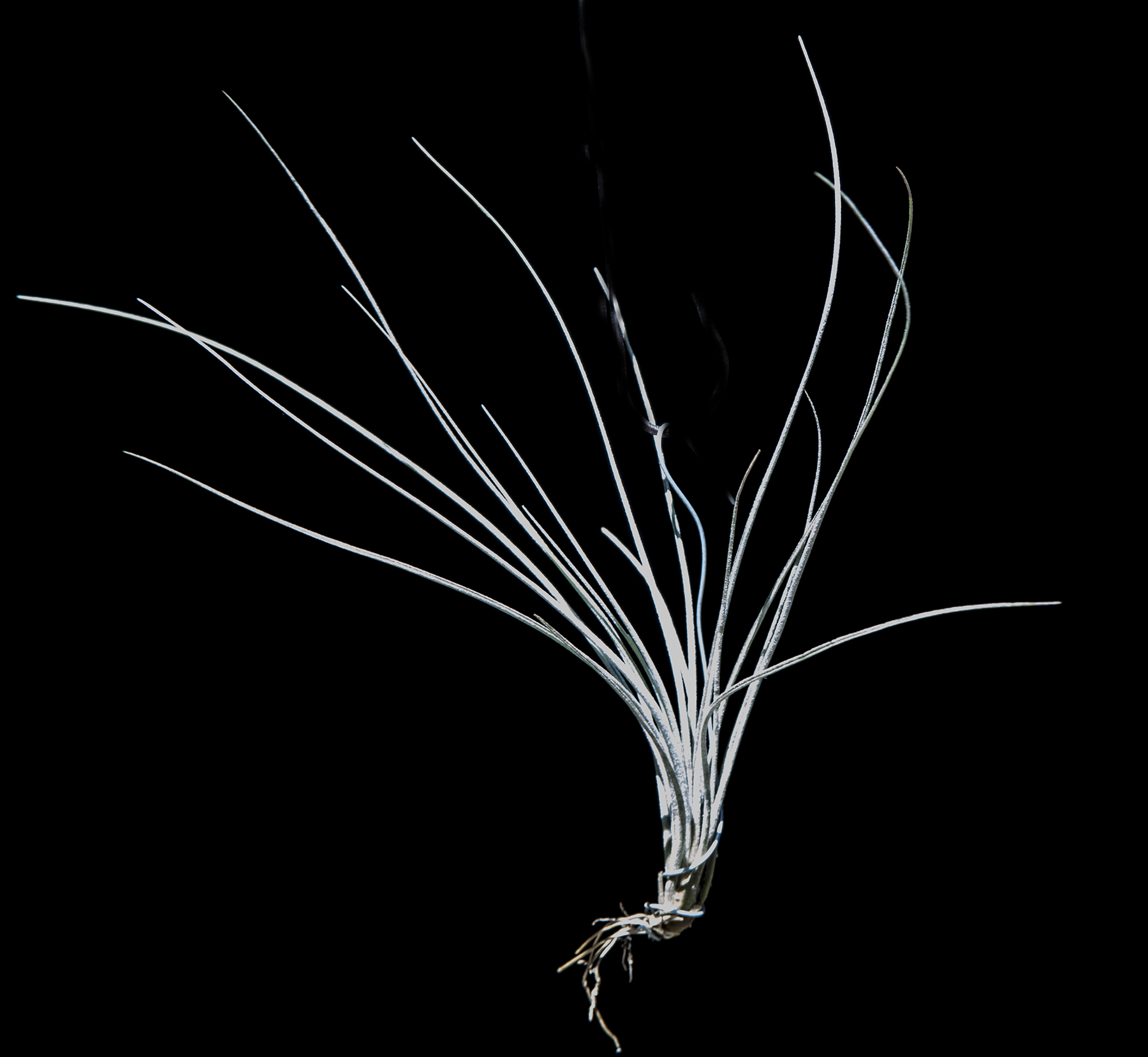A
catalogue of Bromeliads used for various projects by - Lloyd Godman
This
is a catalogue of bromeliads used by Lloyd godman for his various installations
and photosynthesis projects - the collection of pants he accessed in
New Zealand from 1996 - 2004 was collected from a wide range of sources,
while most were brought from Greens Bromeliads, some were also donated
by the Dunedin Botanical Gardens. Later in 2004 these plants were either
sold or given away with his move to Australia.
Lloyd is at present re-establishing his collection where he now lives
in Melbourne.
A
Lexicon of Bromeliads: A
resource by Lloyd Godman
Genus - Tillandsia: Sub-Family - Tillandsioideae: Family - Bromeliad
Tillandsias
are regarded as true air plants and as such are among the most unusual
of the Bromeliad family. They range from bulbous forms and grass like
structures to silver tufted masses. Typically they grow where there
is free air movement like high treetop environments or across open rock
faces, and often they are heavily covered in silver trichomes that help
reflect the high levels of sun light they receive in these locations.
While some tolerate temperatures as low as 5 degrees C (40 degrees F),
or even lower, most prefer temperatures of around 10-32 degrees C (50-32
degrees F). While they require high levels of humidity, they need to
dry out quickly and completely between misting or watering. As the trichome
scales open to absorb moisture and close to retain it, it is important
that the plants are given time to dry out and most plant deaths occur
because of over watering.
Tillandsimania - is an interactive PDF and a work in progress which is updated annually for more information - Tillandsia – air plant E book
$32 Australian including P&P To purchase a DVD
email lloydgodman at gmail.com
|

|
Tillandsia bartramii |
|
|

|
Native distribution and habitat: Known as Bartram’s Airplant, T. bartramii is an epiphytic plant native to Florida, South Carolina, Southern Georgia, Gautemala and the areas of Tamaulips, Oxaca, Jalisco, San Luis Potosi in Mexico. The name references the early Florida naturalist William Bartram (1739 - 1823) who was also a Quaker. The plant grows in lowland deciduous or subdeciduous forest or thorn forest, in shaded or partly sunny places at elevations of 100 m or less.
Growth habit: The growth habit of the plant is similar to T. juncea, and over time forms impressive clumps.
Foliage: The plant has thin fine leaves covered with silver trichomes.
Flowers: The spike produces tubular flowers with purple petals.
Seed:
Pups:
Cultivation: It is easy to grow and cold hardy but like good air movement.
Availability: Not common in cultivation
.
|
|